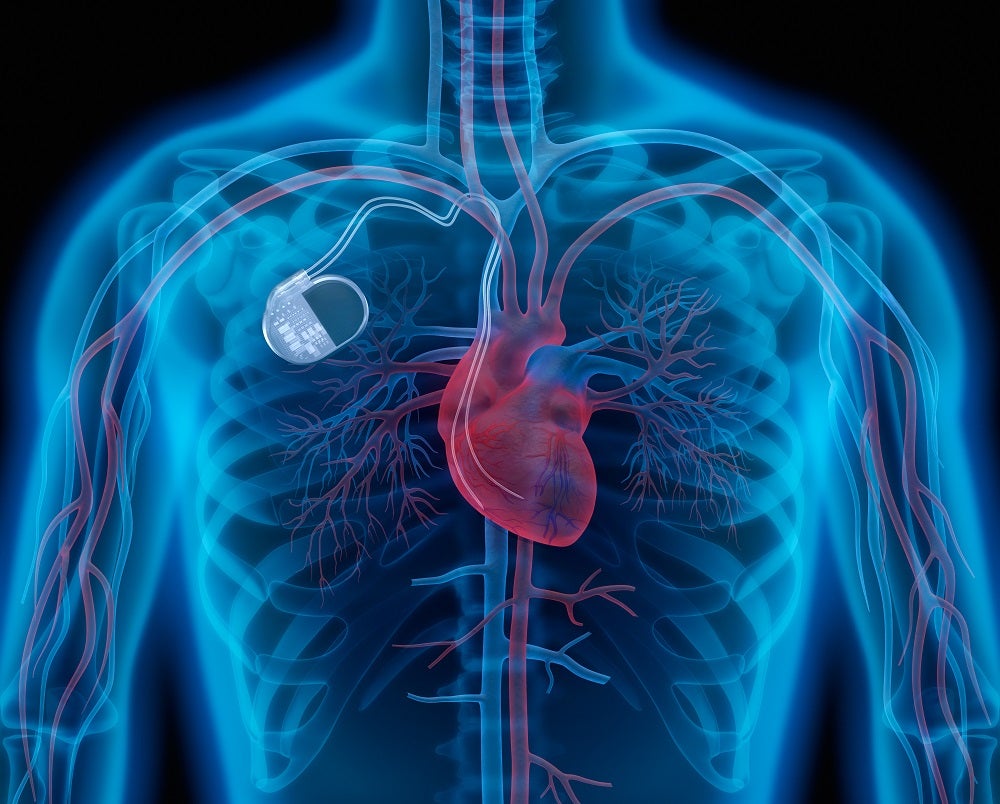
Pacemakers have been an essential part of cardiac care across the world for decades. These small, implantable devices have saved countless lives by regulating irregular heart rhythms, ensuring that the heart beats at a healthy rate. Traditional pacemakers use electrical impulses to stimulate the heart’s natural rhythm, and they have been instrumental in managing conditions such as bradycardia and heart block.
Over the years, the pacemaker market has seen steady growth, driven by ageing populations, increased awareness of heart health, and advances in medical technology. According to GlobalData, almost 1.5 million people around the world received a pacemaker in 2022, and it is forecasted that the annual volume of pacemakers sold will reach 2.5 million by 2033.
Neuromodulation in the pacemaker market
The pacemaker market has been around for more than 60 years, so it is referred to as a “mature market”. Pacemaker technology has come a long way since its first implantation in 1958, and manufacturers continue to enhance the market by introducing smaller devices for minimally invasive surgery, improving pacing technology, and implementing wireless communication.
Neuromodulation is a relatively recent development in the pacemaker market, offering an alternative to traditional electrical stimulation. This technology involves the modulation of the autonomic nervous system, particularly the vagus nerve, to regulate cardiac rhythms.
The concept of neuromodulation is not entirely new, as it has been used for treating various neurological and psychiatric disorders. However, its application in cardiology has garnered significant attention in recent years. Neuromodulation devices, such as vagus nerve stimulators (VNS), work by sending electrical signals to the vagus nerve, which plays a crucial role in controlling heart rate. By stimulating this nerve, neuromodulation can effectively treat conditions such as atrial fibrillation, heart failure, and even hypertension. Unlike traditional pacemakers, which rely on artificial pacing, neuromodulation allows the body’s own regulatory mechanisms to work more efficiently, resulting in more natural heart rhythm management.
Pacemaker manufacturing
Not only are pacemakers more reliable than in previous generations, but they are also getting smaller and smarter for minimally invasive surgery and remote patient monitoring. Implementing these innovations that are improving patient lives is not without its challenges for manufacturers who need to fit more capabilities into smaller devices.
A tried and trusted method for cardiac pacemakers is a wire-based system. Electrical energy is conveyed through wires or a cardiac pacemaker lead to stimulate the heart and make sure that it’s beating and maintaining a steady rhythm.
Pacing leads are subject to a great deal of cyclic fatigue and require excellent conductive qualities, as well as high dielectric strength to prevent the pacemaker device from shorting. Wire component manufacturer Alleima provides essential components for pacemakers that enable electrical impulses to be transmitted from the pacemaker to the heart and to communicate information about the activity of the heart back to the pacemaker. Drawing on expertise in metal alloys and medical wire configurations, Alleima has manufactured efficient and reliable pacemaker leads across the globe.
For more information about Alleima medical wire components, including available materials and surface treatments, visit their website.



